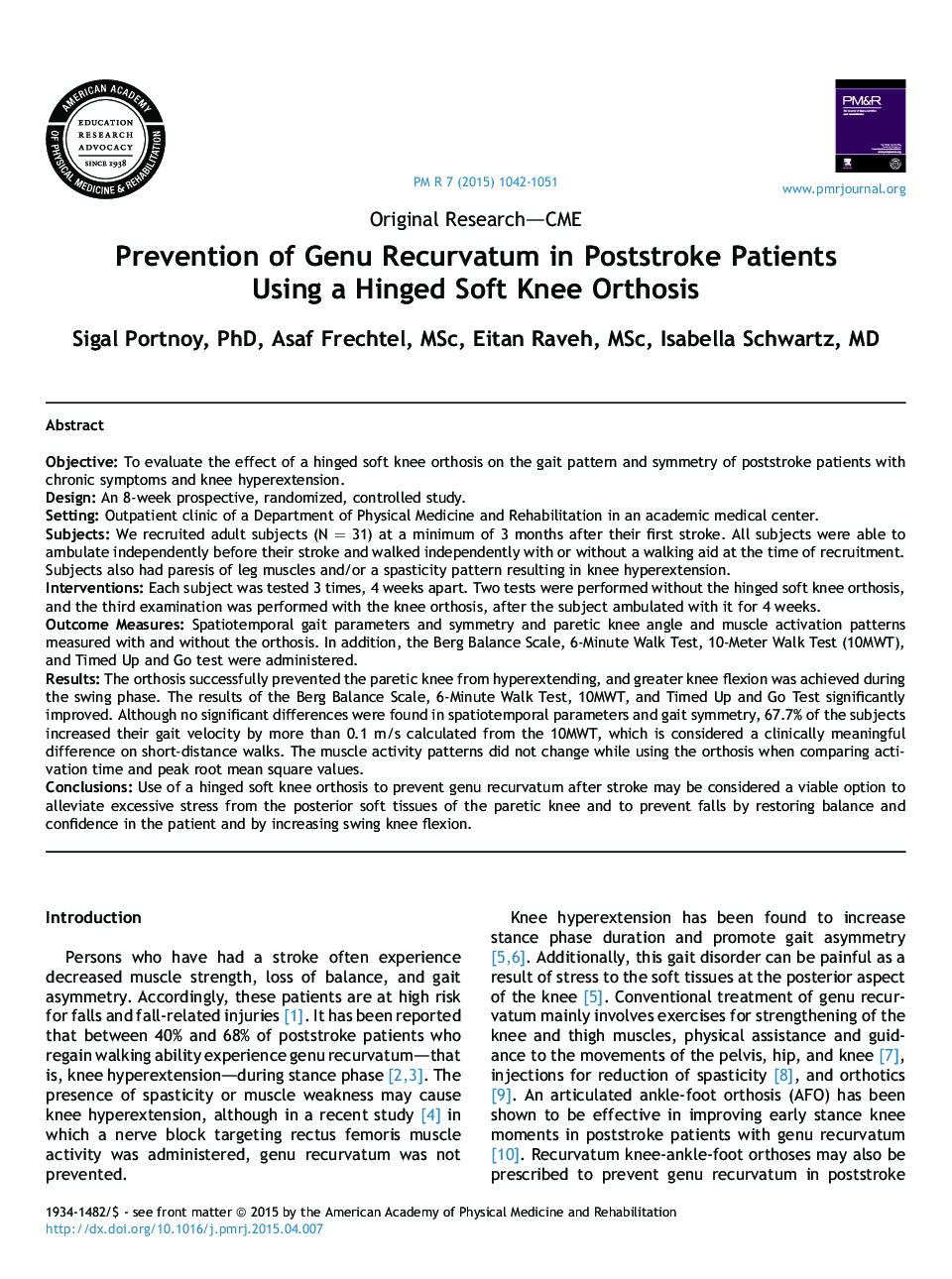| Article ID | Journal | Published Year | Pages | File Type |
|---|---|---|---|---|
| 2704864 | PM&R | 2015 | 10 Pages |
ObjectiveTo evaluate the effect of a hinged soft knee orthosis on the gait pattern and symmetry of poststroke patients with chronic symptoms and knee hyperextension.DesignAn 8-week prospective, randomized, controlled study.SettingOutpatient clinic of a Department of Physical Medicine and Rehabilitation in an academic medical center.SubjectsWe recruited adult subjects (N = 31) at a minimum of 3 months after their first stroke. All subjects were able to ambulate independently before their stroke and walked independently with or without a walking aid at the time of recruitment. Subjects also had paresis of leg muscles and/or a spasticity pattern resulting in knee hyperextension.InterventionsEach subject was tested 3 times, 4 weeks apart. Two tests were performed without the hinged soft knee orthosis, and the third examination was performed with the knee orthosis, after the subject ambulated with it for 4 weeks.Outcome MeasuresSpatiotemporal gait parameters and symmetry and paretic knee angle and muscle activation patterns measured with and without the orthosis. In addition, the Berg Balance Scale, 6-Minute Walk Test, 10-Meter Walk Test (10MWT), and Timed Up and Go test were administered.ResultsThe orthosis successfully prevented the paretic knee from hyperextending, and greater knee flexion was achieved during the swing phase. The results of the Berg Balance Scale, 6-Minute Walk Test, 10MWT, and Timed Up and Go Test significantly improved. Although no significant differences were found in spatiotemporal parameters and gait symmetry, 67.7% of the subjects increased their gait velocity by more than 0.1 m/s calculated from the 10MWT, which is considered a clinically meaningful difference on short-distance walks. The muscle activity patterns did not change while using the orthosis when comparing activation time and peak root mean square values.ConclusionsUse of a hinged soft knee orthosis to prevent genu recurvatum after stroke may be considered a viable option to alleviate excessive stress from the posterior soft tissues of the paretic knee and to prevent falls by restoring balance and confidence in the patient and by increasing swing knee flexion.
